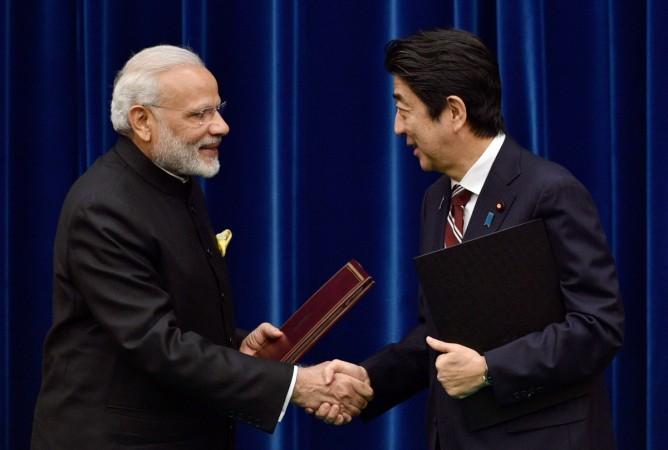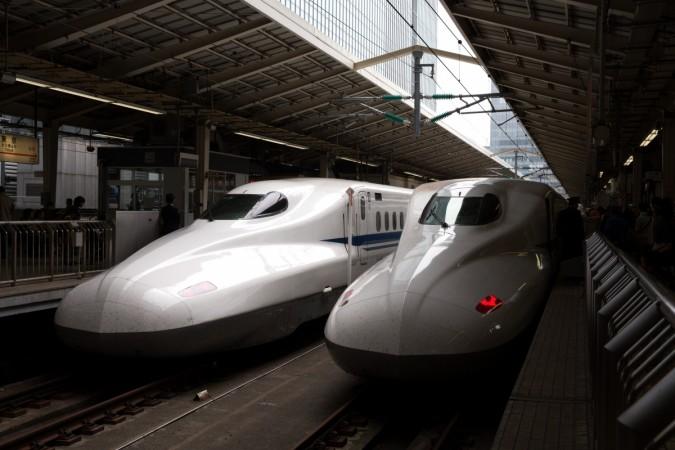
Prime Minister Narendra Modi and and his Japanese counterpart Shinzo Abe will lay the foundation stone for the Mumbai-Ahmedabad bullet train in Gujarat when the latter visits India in September.
The Mumbai-Ahmedabad high speed rail (MAHSR), popularly known as the bullet train, will begin operations from 2023, Railways Minister Suresh Prabhu told the Lok Sabha during Question Hour on Wednesday, August 2.
In 2015, India and Japan had signed a memorandum of cooperation for the MAHSR project, which is one of the key promises that PM Modi made during his campaign ahead of the general elections in 2014.
"The entire funding for this, or more or less 85% of this will come from the Japanese and that too on very soft terms. This is the best soft term under the ODA, Overseas Development Assistance, Japan has ever offered to anyone in the world," Prabhu told the House.
During a visit to Japan in November 2016, Modi and Abe had taken a ride on the Shinkansen bullet train from Tokyo to Kobe. The same technology will be used on the MAHSR. The project is estimated to cost around Rs 1 lakh crore, the funds for which are being provided by the Japan International Cooperation Agency (JICA).
Prabhu added that the bullet train would run at a top speed of 350 km per hour and that "4000 Indian officials will be trained by Japan of which 137 have already been trained." A training school for Indian railway engineers is also being set up in Ahmedabad.
While addressing concern over the safety measures of the bullet trains, Prabhu said that Japan would be providing the technology for it. "The entire corridor is elevated, fully fenced and provided with fully integrated network signalling," he said.
The project will be implemented in seven routes — Delhi-Mumbai, Delhi-Kolkata, Delhi-Chennai, Mumbai-Chennai, Kolkata-Chennai, Chennai-Bengaluru-Mysore and Mumbai. The studies for the same are at various stages of completion. The central government has also identified more routes for the project.
Considerable reduction in travel time

It takes about seven hours by train to travel between Ahmedabad and Mumbai. The high speed trains aim to reduce the travel time from seven hours to two hours.
The Indian Railways will reportedly hire a consultant to look into land acquisition and other financial matters to make sure the project does not get delayed. The consultant will be given the responsibility to make sure that every land owner is given full compensation and that their family members are provided with jobs, a senior railway board official involved in the project told India Today.
The initial detailed project report (DPR) prepared by the authorities in Japan is providing technical assistance to Indian Railways and has also suggested that a major portion of the corridor be constructed on surface. However, the report was modified to take the elevated route mainly to avoid delays.
According to officials, the modification would not pose any legal and environmental hurdles over land acquisition.
850 hectares of land required for project
Approximately, 850 hectares of land would be required for the high speed trains project, a railway ministry official was quoted by India Today as saying. The project had earlier been planned on surface due to which it would have required more land. It could also increase the expenditure on the project.
"The consultant would prepare a comprehensive report on the quantity of land to be acquired and its socioeconomic impact. The consultant will maintain a record of the trade and industries that will be affected due to land acquisition. Accordingly, the compensation along with job to the affected families will be ensured," a top railway official said.

Compensation amount to land owners for an elevated corridor will be less. An elevated corridor will also ensure the speedy execution of the project. Japan will provide Indian Railways with bullet train technology and financial assistance besides ensuring job opportunities to Indian companies for the construction of the high speed trains.
Out of the 508 km corridor length, Indian companies will be given 450 km of work while the Japanese companies will be given 52 km of work. Foreign players would be given the task of working on the seven km stretch of the under-sea rail track because India still does not have the techonology to construct under-sea rail tunnels.
The bullet trains in India will run at a speed of 320 km per hour, thereby matching the speed of the leading high speed train systems across the globe.









!['Had denied Housefull franchise as they wanted me to wear a bikini': Tia Bajpai on turning down bold scripts [Exclusive]](https://data1.ibtimes.co.in/en/full/806605/had-denied-housefull-franchise-they-wanted-me-wear-bikini-tia-bajpai-turning-down-bold.png?w=220&h=138)



